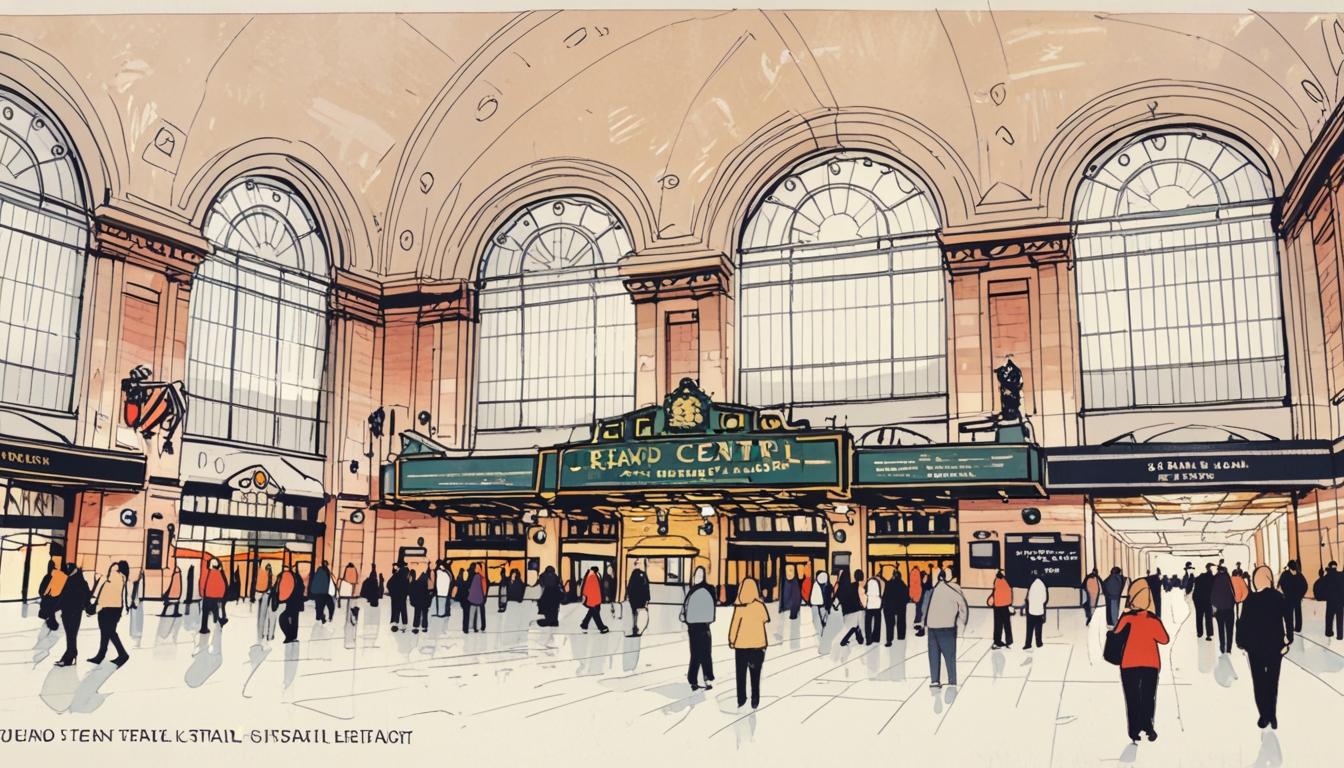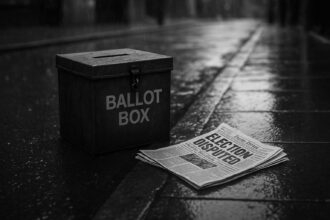The introduction of Irish language signs at Grand Central Station has sparked a significant controversy surrounding identity and rights in Northern Ireland, drawing fierce opinions from both sides of the argument.
A significant dispute has arisen surrounding the introduction of bilingual signage at Belfast’s Grand Central Station, igniting discussions about language rights and identity within Northern Ireland. This controversy centres on a decision made by Minister Kimmins, aiming to implement Irish language signs at the prominent transport hub. Jamie Bryson, known for his vocal opposition to such measures, recently penned a letter expressing his views on the matter.
In his correspondence, Bryson described the push for bilingual signage as controversial and raised questions about the legality and executive approval of the decision. He characterised the situation as a potential “imposition” of the Irish language, a concept that has stirred debate among community members and political figures alike. The legal proceedings regarding this issue are expected to clarify the implications and legitimacy of the signage initiative.
Critics of Bryson’s standpoint have countered his arguments by highlighting the historical context of language imposition in Ireland. They point out that the English language was established long before the current political landscape of Northern Ireland, and assert that the situation surrounding bilingual signage mirrors long-standing trends in language use across the region.
Supporters of the bilingual signage reference the European Charter for Regional and Minority Languages, which underpins policies developed by Belfast City Council (BCC). According to the BCC website, the charter obliges state authorities not to obstruct minority language usage. The council’s policy stipulates that language signage must reflect the local demographic, which supporters claim is compliant with European guidelines recognising both Irish and Ulster Scots as minority languages.
The controversy has also sparked discussions about community sentiments regarding various public processes, including parades and gatherings. Bryson’s letter suggested a need for community reflection on these events, drawing parallels between public festivities and language representation.
An underlying theme in the ongoing dialogue involves contrasting views on identity in Northern Ireland, as articulated by local councillors. TUV councillor Ron McDowell mentioned, “Ulster is a melting pot of three identities – English, Irish and Ulster British. One identity cannot be forced upon people over another,” encapsulating the delicate balance between maintaining individual identities and recognising communal rights.
As the discussions develop, the Grand Central Station signage case has become a focal point for broader conversations regarding cultural representation, community identity, and the rights of linguistic minorities in Northern Ireland.
Source: Noah Wire Services
- https://www.dearg.ie/en/nuacht/cartlann/023940-robinson-bad-process – This article mentions the controversy surrounding bilingual signage at Belfast Grand Central Station, with DUP leader Gavin Robinson commenting on the process, highlighting political views on the issue.
- https://nation.cymru/news/legal-challenge-planned-over-irish-language-signs-at-grand-central-station/ – This news piece details the legal challenge planned over Irish language signs at Grand Central Station, including the involvement of Jamie Bryson and issues of executive approval.
- https://www.theyworkforyou.com/ni/?id=2025-04-08.2.16 – The Minister justifies the bilingual signage by referencing similar Translink decisions, providing context to the policy behind the signage at Grand Central Station.
- https://www.belfastcity.gov.uk/ – Belfast City Council’s website would detail policies related to language signage, including compliance with European guidelines on minority languages like Irish and Ulster Scots.
- https://www.coe.int/en/web/european-charter-regional-or-minority-languages – This link provides information on the European Charter for Regional and Minority Languages, which underpins policies for protecting minority languages, relevant to the signage debate.
Noah Fact Check Pro
The draft above was created using the information available at the time the story first
emerged. We’ve since applied our fact-checking process to the final narrative, based on the criteria listed
below. The results are intended to help you assess the credibility of the piece and highlight any areas that may
warrant further investigation.
Freshness check
Score:
8
Notes:
The content relates to a current controversy, however, there is no specific mention of recent events or dates that would confirm its absolute freshness. It likely reflects ongoing discussions rather than being outdated.
Quotes check
Score:
6
Notes:
The narrative includes a direct quote from TUV councillor Ron McDowell, but lacks any clear indication of the quote’s origin or date. Without further information, it’s difficult to verify this as the first use of the quote.
Source reliability
Score:
8
Notes:
The narrative originates from the Irish News, a reputable publication in Northern Ireland. However, the reliability of specific claims within the narrative depends on the credibility of the figures and institutions referenced.
Plausability check
Score:
9
Notes:
The dispute over bilingual signage aligns with ongoing cultural and identity debates in Northern Ireland. The reference to legal and policy frameworks, such as the European Charter for Regional and Minority Languages, supports the plausibility of the situation.
Overall assessment
Verdict (FAIL, OPEN, PASS): PASS
Confidence (LOW, MEDIUM, HIGH): HIGH
Summary:
The narrative appears to be current and relevant to ongoing cultural debates in Northern Ireland. While some aspects like quotes could benefit from further verification, the overall context is plausible and comes from a reputable source.













